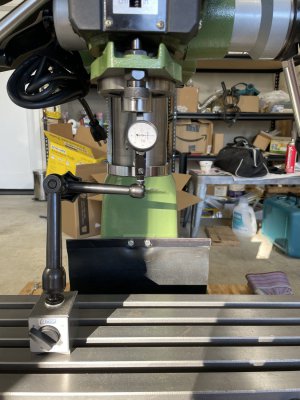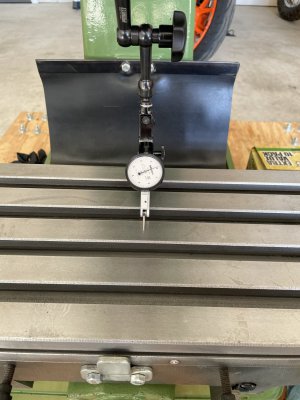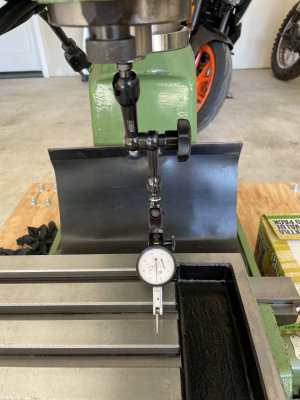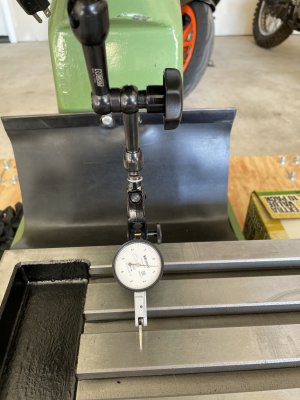If you think your head hurts now, wait until you see what happen when tools and fixtures deflect ever so slightly.
If you examine anything under enough of a lens, flat surfaces appear like potato chips, and polished work looks like the cratered face of the dark side of the moon. Without oil, ground ways sliding past each other appear like the Alps being inverted and dragging back and forth over the Pyrenees. It's all relative, so don't trip up over a number until the decimal point creeps far enough to the right to fuss over. Of course, it's fun to measure and examine, it's part of learning. Perspective has to be learned individually, though. My perspective is that you'll forget all about the bow in the table once you start milling away metal.
Edit: .001 accuracy takes a great amount of work to attain in manual machining. Unless it has a fit requirement with another part, I'm content with .005 most of the time. Only critical fits require more, for the most part. Check out some manufacturing tolerances called out on blueprints and things around the web, most production work is held loose so the part is more feasible to produce.






